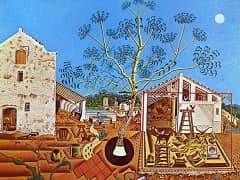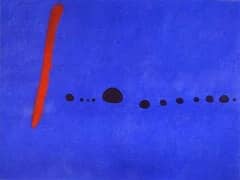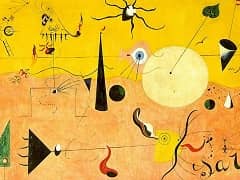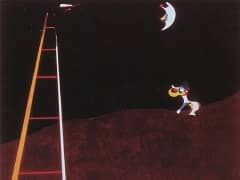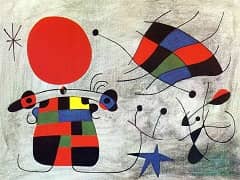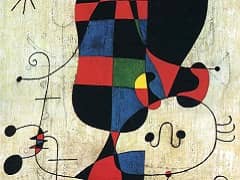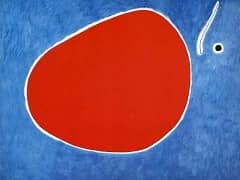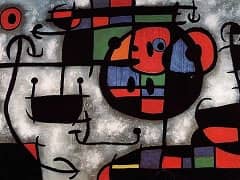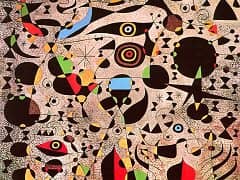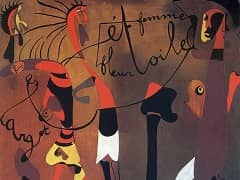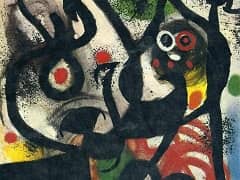Harlequin's Carnival, 1924-25, by Joan Miro
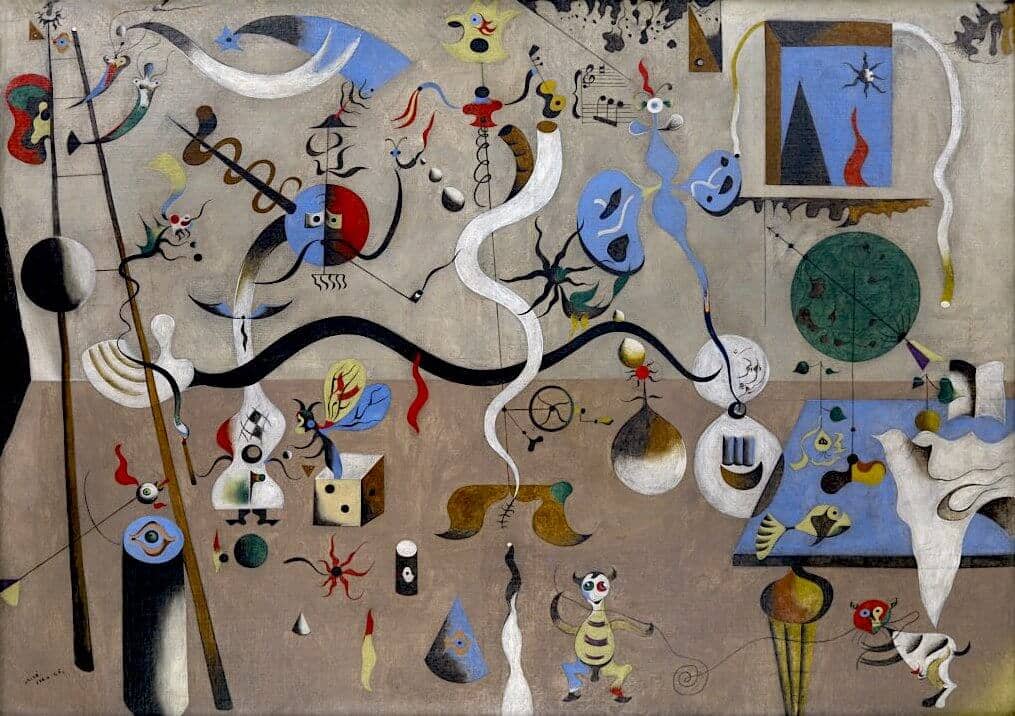
When Miro moved into the studio of Pau Gargallo on the Rue Blomet in Paris, he came in contact with the poets and artists belonging to a group that had arisen from Dadaism. In 1924, this became the Surrealist group centered on the poet Andre Breton. Miro was never an orthodox Surrealist. However, the movement legitimized the use of dreams and the subconscious as artistic raw material. It thus offered him the possibility of liberating his own pictorial style by allowing him freely to combine the earthly and the magical elements seen in his "detailist" period. Harlequin's Carnival is good example of this change. The world of the imagination and subconscious, rather than being an end in itself, was for Miro a way of giving shape in his paintings to his lived experiences and his memories. Harlequin's Carnival is seen by art critics as an account of the human subconscious mind. It is considered the highest point in Miro's personal surrealist style. Along with Persistence of Memory by Salvador Dali, Harlequin's Carnival has become the most iconic image of the Surrealism Movement.
In spite of the fact that many of his pictures had been sold, Miro led a hard life in his studio in the Rue Blomet. Miro later said:
I used to come home in the evening without having eaten anything, and I wrote down my feelings. During that year I spent a lot of time with poets; because I felt it necessary to overcome the 'plastic' in order to reach poetry."
After The Farm, Harlequin's Carnival was to become Miro's second striking work. In it, painting and graphic elements that run through the picture seem for the first time to be unified.

